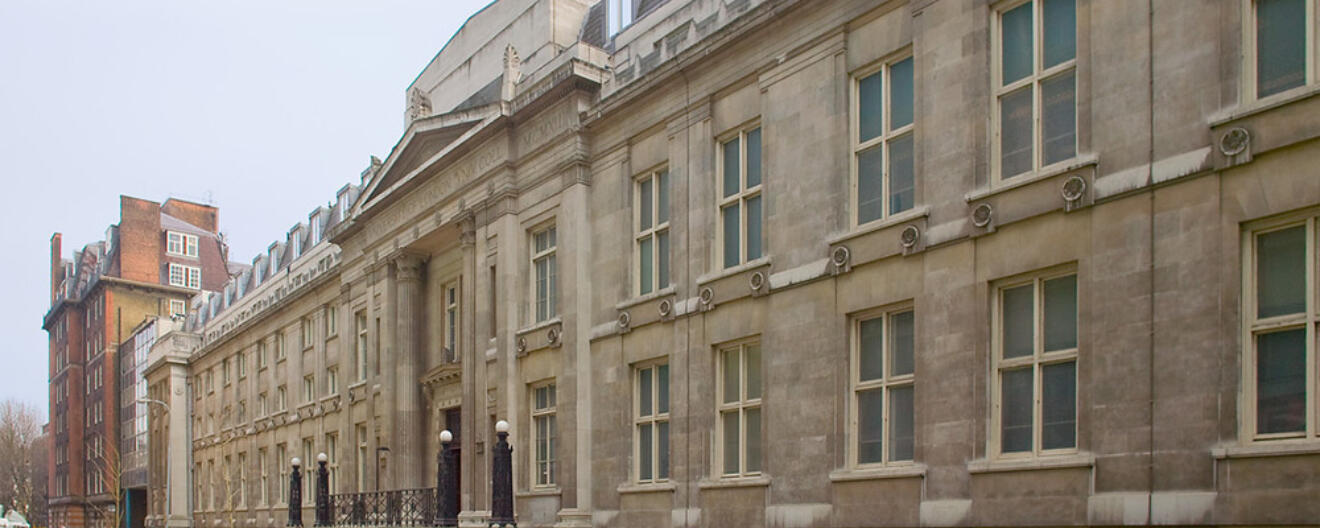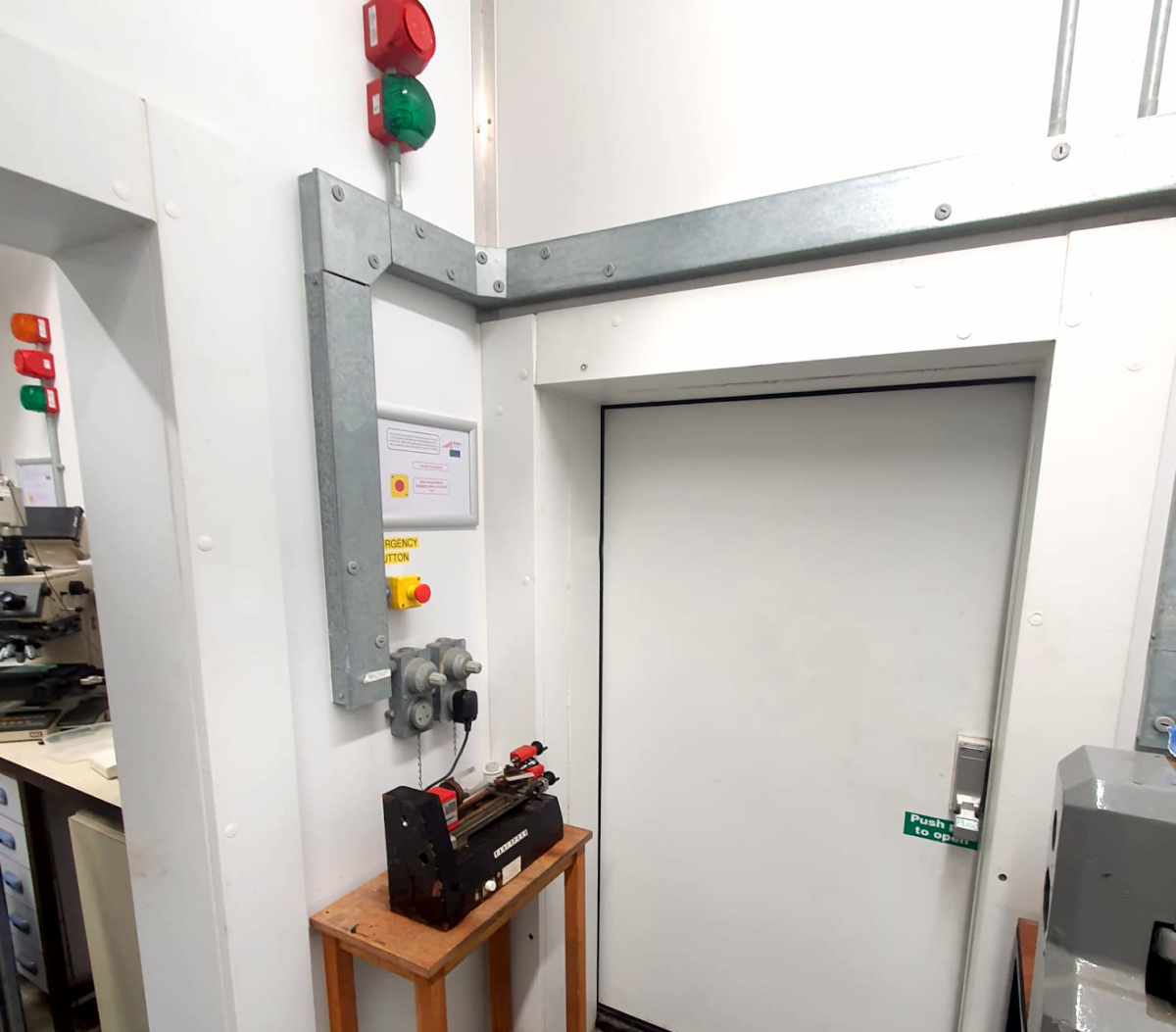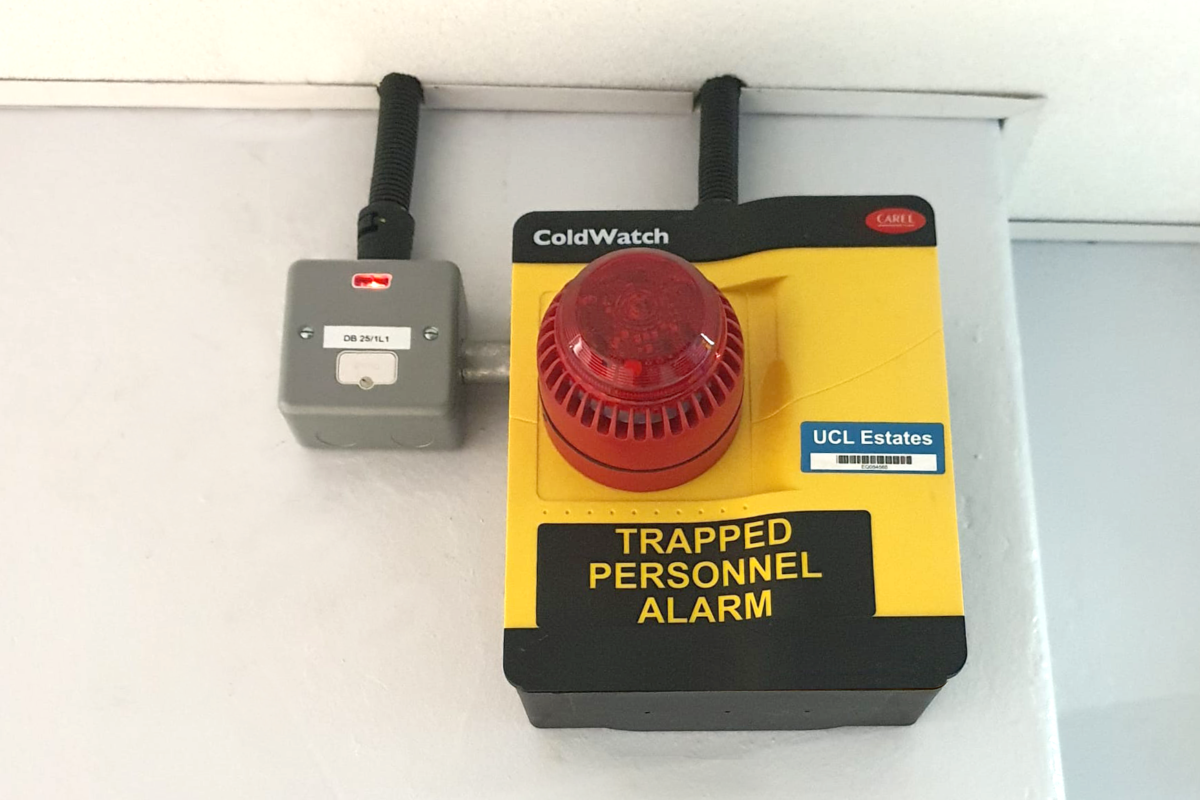Laboratory Safety System Development
Aston Group designed and built a laboratory safe system in a cold room at UCL

● Designed, prototyped and installed a new safety system for 3 laboratory rooms
● Sourced components capable of withstanding temperatures as low as ‑30℃
● Implemented remote connectivity for a bespoke alert system
As a longstanding UCL partner, Aston Group was actively involved in the recent refurbishment of the university’s Cold Room for the Department of Earth Studies in central London. The facility is used by world-leading researchers to study a variety of subjects, including ice samples from the Antarctic. The temperature is typically set at approximately -20℃ but can go as low as -30℃.
With such extreme working conditions, researcher safety is a primary concern for the university. As a result, access to the laboratory is limited to periods of 20 minutes at a time.
During the course of the refurbishment, it became evident that a reliable, automated safety system was needed to ensure the well-being of students and staff, while also protecting ice samples.
John Bowles, Head of Laboratories at UCL, tasked Aston Group with sourcing and installing a system that would prevent people using the laboratory from suffering from exposure to low temperatures. The other focus was to implement panic buttons that would allow workers to signal for help if got into difficulty in the lab.
The Challenge
Although UCL was already monitoring researcher safety before the refurbishment, the client wanted to install more advanced, automated technology that would integrate with its existing building management system.
When given the brief by UCL, our team undertook an extensive search for an appropriate solution but were surprised to find that none existed. Having spoken to several potential suppliers, it became apparent that a system would have to be built specifically for the university, which could take up to a year to design and install.
In addition, it was imperative to find system components that were suitable for use at temperatures as low as -30℃ without becoming brittle or perishing. Extensive research was undertaken to find a supplier that could deliver suitable components in an acceptable time frame – in spite of present supply chain issues.
The Solution
Given the lack of suitable, off-the-shelf systems, Aston Group started to design and develop a bespoke system for UCL.
Martin Barlow, Electrical Compliance Manager, analysed multiple different solutions that would fulfil the requirements UCL described. However, he quickly realised that the only solution would require a Programmable Logic Controller (PLC) at the heart of the system. The main purpose of the PLC is to manage and control the inputs and outputs of the system, while also ensuring maximum uptime and reliability. These PLC units are typically used in industrial, automation settings.
The PLC ensures the correct sequence of events takes place. If the sequence is correct, the alarm won’t sound. However, if there is a deviation, the alarm will sound and an alert is sent to key members of the university staff.
The PLC sequence developed by Martin is triggered by a researcher opening the laboratory door. The researcher must then close the door behind them, which starts the process. A beacon and sounder installed within each lab illuminates and sounds to acknowledge the start of the process. The researcher then needs to press a green button inside the door to start the working-time process. This action confirms their presence in the lab.
A timer within the programme is initiated by pressing the button. Once the designated 18 minutes working time has elapsed, an amber light inside the lab will start to flash, with a sound, warning the researcher that their working time has nearly elapsed.
This allows them 2 minutes to prepare for leaving the lab, where they will then have to press a second button outside of the lab (safe zone) to complete the full working process. If this is not pressed and the researcher leaves the area without any acknowledgement, this will raise an alarm. This sounds locally and sends a signal to the GSM and building management system (BMS) where a designated team will be notified to investigate the situation.

Local alarm panic buttons were also introduced into the system, as requested. This enables researchers to call for help in the case of an emergency within the labs. However, the system is designed to take into account an accidental panic button activation. In this case, the user has 5 seconds to reset the button locally, before the local alarms sound and a distress signal is sent to the BMS and GSM, an auto-dialler which is designed to send SMS alerts and/or phone calls to users.
The initial sequence was presented to the UCL team before a working prototype was developed to test the logic of the system and the suitability of the components. A specialist cabinet was then sourced to house all the necessary hardware and withstand freezing temperatures. Once this prototype had been stress tested, the final system was installed.
If the door is accidentally left open without a reason, the alarm will also sound, notifying staff to close it. This preserves the condition of any ice samples as well as researcher well-being.
Currently, there are plans in place to further enhance this system. A battery back-up power system is being developed to ensure constant uptime, which would further ensure safety within the laboratory.


The Results
The Aston Group team received the brief for the laboratory safety system in November 2021. They had designed, developed and installed the system by February 2022. It is now fully functional and keeps researchers safe while they work.
The UCL team was delighted with the system, not only because it was actioned so quickly but because the entire system is tailored to their needs. If any adjustments are needed, they can be directly programmed into the PLC and are effective immediately.
“We are delighted with the laboratory safety system developed for UCL by Aston Group. Although a solution wasn’t immediately apparent, their team took a proactive approach to creating a safety system for us. The unique system gives us complete peace of mind that our staff and researchers are safer while working at extreme temperatures. It was a pleasure to work with their teams.”



